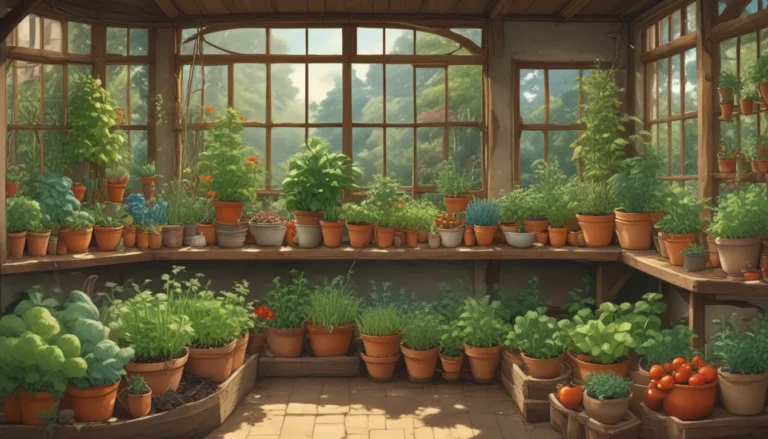Understanding and Nurturing Maple Trees: A Complete Guide

Maple trees, part of the Acer genus, are true treasures in the plant kingdom. From the colorful foliage of the Japanese maple to the practical uses of sugar maple sap, these trees offer a wide range of benefits and beauty to any landscape. Whether you’re looking for shade, autumn color, or a unique focal point, there’s a maple tree species for you.
In this comprehensive guide, we will walk you through everything you need to know about growing and caring for maple trees. From understanding the different species to propagation methods, pests and diseases, and ideal uses, this guide will equip you with the knowledge to nurture your maple trees to perfection.
Everything You’ll Learn
- What Are Maple Trees?
- Cultivation and History
- Propagation Techniques
- Growing Maple Trees
- Essential Growing Tips
- Pruning and Maintenance
- Popular Maple Species and Cultivars
- Managing Pests and Diseases
- Best Uses
- Quick Reference Growing Guide
Maple trees come in all shapes and sizes, from towering giants to shrub-like options. They offer intense displays of color and versatile uses in landscaping. Let’s dive into the world of maple trees!
What Are Maple Trees?
Maple trees belong to the Acer genus and encompass a wide variety of species. From the iconic Japanese maple to the practical sugar maple, these trees offer diverse foliage and characteristics. Whether you’re drawn to the familiar red, silver, or sugar maples, or looking for unique species like the hornbeam or paperbark, there’s a maple tree for every preference.
Maple leaves are characterized by their pinnate veining, sinuate margins, and typically five-lobed shape. Most maples produce winged fruits known as samaras. While many people envision the classic Japanese, sugar, or red maple leaves, there are distinct variations like the hornbeam with ovoid leaves and compound-leaf species like boxelder and paperbark.
Cultivation and History
Japanese maples have a rich history dating back to the seventh century, while North American species like sugar and bigleaf maples were utilized by native peoples for food, tools, and medicine. Today, red, silver, and Japanese maples dominate the cultivation scene, with a growing variety of options for different climates and landscapes.
Maple trees can thrive in USDA Hardiness Zones 2 to 10, offering adaptability to various growing conditions. From traditional uses in furniture and flooring to ornamental landscaping, maple trees have a rich history of cultivation and practical applications.
Propagation Techniques
There are several methods for propagating maple trees, including growing from seed, stem cuttings, layering, air layering, grafting, and transplanting saplings. Each method offers unique benefits and challenges, allowing you to choose the most suitable approach for your needs.
- From Seed: Growing maples from seeds requires patience and stratification for certain species. Planting seeds in early winter or fall provides a natural cold stratification process for germination.
- From Stem Cuttings: Stem cuttings can be rooted to propagate new maple trees. Selecting healthy branches, utilizing rooting hormone, and providing proper care can result in successful propagation.
- From Simple Layering: Layering offers an exact replica of an existing tree by promoting root growth on branches in contact with the soil. Simple layering is ideal for species like bigleaf and vine maples.
- By Air Layering: Air layering is a common propagation method for all maple species, promoting root formation in moss-wrapped branches. Patience and care are key during the root development process.
- By Grafting: Grafting combines the traits of different cultivars or species, offering customized characteristics. Working with scion and rootstock branches during the growing season produces successful grafting outcomes.
- From Saplings: Transplanting saplings provides a faster route to mature maple trees, suitable for immediate landscape impact. Soil preparation and proper planting techniques ensure successful establishment.
Each propagation method offers unique advantages, allowing you to choose the most appropriate technique based on your resources and objectives.
How to Grow Maple Trees
Maple trees thrive in moderately moist, well-draining, loamy soil with a pH range of 5.0 to 7.0. Different species exhibit varying soil and sunlight preferences, from full sun to partial shade. Providing adequate moisture, fertilization, and ideal growing conditions ensures healthy growth and establishment.
Key Growing Tips:
- Grow in slightly acidic to neutral soil that is well-draining.
- Keep soil moist when plants are young.
- Plant in full sun to partial shade, depending on species.
Maintenance and Care:
- Prune trees in early spring to thin out crowded crowns and remove dead or diseased branches.
- Use clean tools for pruning to prevent disease spread.
- Provide granular, all-purpose fertilizer in the spring for young trees.
Maple trees are low maintenance once established, requiring minimal care beyond occasional pruning and fertilization. Adhering to essential growing tips ensures vibrant, healthy maple trees in your landscape.
Popular Maple Species and Cultivars
From Armstrong Gold to Paperbark and Crimson King to Sun Valley, maple trees offer a vast array of species and cultivars to choose from. Each variety showcases unique characteristics, colors, and growth habits, allowing you to select the perfect tree for your landscape.
- Armstrong Gold: A columnar A. rubrum cultivar with yellow and gold foliage, reaching up to 40 feet tall, ideal as a border or focal point tree.
- Autumn Blaze: Known for vibrant red fall foliage, ‘Autumn Blaze’ is a fast-growing, disease-resistant tree reaching up to 50 feet tall.
- Celebration: A hybrid of silver and red maples, this cultivar offers a compact growth habit and bright orange and red fall leaves.
- Crimson King: A Norway cultivar with regal purple foliage, maintaining its hue in northern climates while reaching up to 50 feet tall.
- Flame: An Amur species with bright red fall foliage, ideal for smaller spaces and privacy needs, staying under 20 feet tall.
- Paperbark: Known for year-round interest, paperbarks offer orange-bronze fall foliage and elegant peeling bark texture, thriving in various landscapes.
- Sun Valley: A cold-hardy A. rubrum species with a symmetrical growth habit and intense red flowers, suitable for Zones 4-8 landscapes.
Each species and cultivar presents unique characteristics and growth patterns, allowing you to select the perfect maple tree for your specific landscape needs.
Managing Pests and Diseases
Maple trees are generally resilient against pests but may face occasional infestations or disease issues. Common pests like aphids and scale insects can impact maple trees, while diseases like anthracnose, bacterial leaf scorch, tar spot, and verticillium wilt pose potential threats to tree health.
- Aphids: Woolly alder aphids and other aphid species can infest maple trees, causing honeydew excretions and leaf damage. Control methods include targeted insecticides and natural predator intervention.
- Scale Insects: Common scale species like cottony maple scale and gloomy scale can infest maple trees, resulting in honeydew and leaf damage. Utilize horticultural oils and insecticides for effective scale control.
- Disease: Maple trees may face fungal diseases like anthracnose, bacterial leaf scorch, tar spot, and verticillium wilt. Proper pruning, sanitation, and chemical treatments can mitigate disease impacts on tree health.
By implementing preventive measures, timely monitoring, and appropriate control strategies, you can protect your maple trees from common pests and diseases.
Best Uses of Maple Trees
Maple trees offer diverse uses in landscaping, from windbreaks to shade trees and ornamental focal points. Different species cater to specific landscape needs, providing color, privacy, and aesthetic appeal to outdoor spaces.
- Bonsai: Maple trees can be transformed into intricate bonsai specimens, showcasing miniature landscapes and intricate designs.
- Specimen Trees: Larger maples serve as striking focal points in gardens, offering vibrant foliage color and unique growth habits.
- Containers: Smaller maple varieties can be planted in containers for versatility and mobility, adding ornamental appeal to patios and decks.
- Windbreak: Columnar maples like ‘Armstrong Gold’ are ideal for creating windbreaks and privacy screens in landscapes.
- Shade Trees: Tall species like ‘Autumn Blaze’ provide ample shade and visual interest in large outdoor spaces.
- Syrup Production: Maples like bigleaf and sugar maples can be tapped for sap production, yielding maple syrup and sugar for culinary use.
With a range of uses and applications, maple trees enhance the aesthetic and functional aspects of outdoor environments, catering to a wide array of landscaping needs.
Conclusion
Maple trees are a versatile and vibrant addition to any landscape, offering striking foliage color, unique growth habits, and practical applications. By understanding the diverse species, propagation methods, growing tips, and maintenance practices, you can nurture healthy and thriving maple trees in your outdoor space.
From graceful Japanese maples to towering sugar maples, each species adds aesthetic and functional value to your landscape, enriching the beauty of your surroundings. With proper care, pest management, and disease prevention, maple trees can flourish and transform your outdoor environment into a vibrant and inviting oasis.
Discover the endless possibilities of maple trees and explore the diverse world of Acer genus to create captivating landscapes that showcase the beauty and resilience of these magnificent trees. Embrace the elegance and charm of maple trees and enjoy the dynamic colors and textures they bring to your outdoor space.





